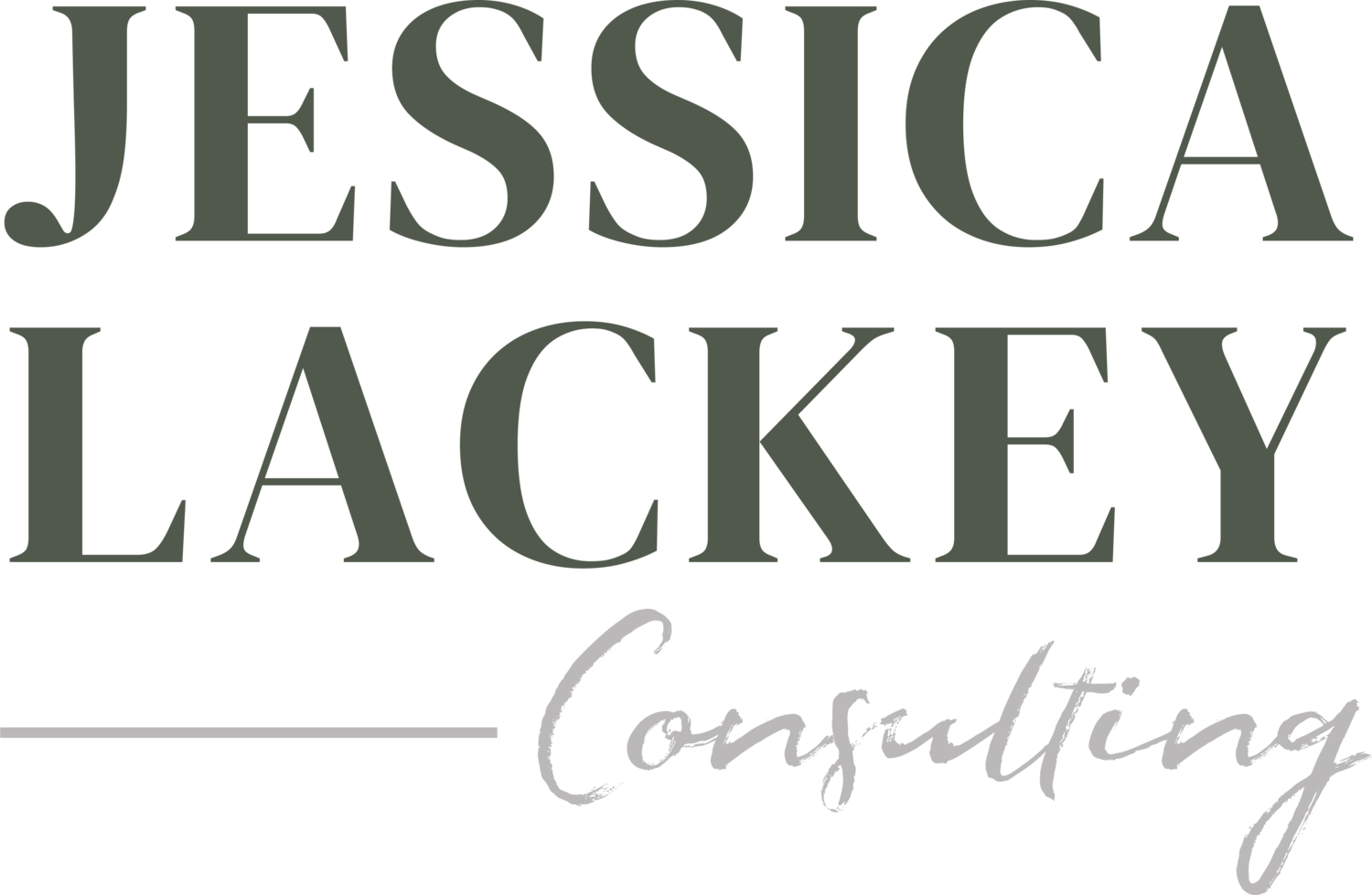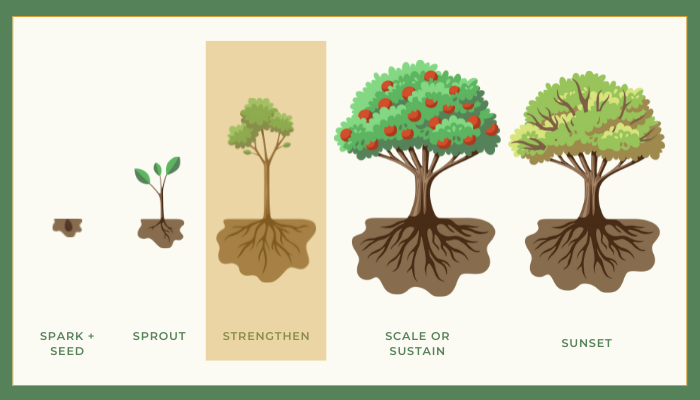5 Stage Business Assessment: What Is The Next Step For Your Business Growth?
Most business strategies assume we are climbing a ladder, with straightforward growth expectations.
The only direction is up
It’s a linear growth process - just hop from stage to stage
Constant movement and productivity propels you forward
The ladder never ends - there’s always more rungs to climb
Leaving us consistently hustling, feeling overwhelmed, like we’re not good enough, like success is always out of our grasp.
But in rooted business, we set aside the ladder and instead build a strong, sustainable business that can weather the sun and the storms of life.
It’s like we are growing a tree.
A tree that builds roots while rising up.
A tree that has seasons of bloom or fruit and seasons of rest. A tree whose canopy protects new seeds and sprouts below.
The action steps that we recommend to grow a rooted business vary from stage to stage of the rooted business lifecycle, just like the way you nurture a seed is very different from the way you care for a mature tree. Because if you’re just starting out in entrepreneurship, where you focus at the Spark or Seed stage is very different from where you focus when you’ve grown to a stable business.
Learn where you are in the 5 stages of business growth - and the tools most important to grow sustainable at your stage of business.
Stage 1: Spark
You’ve made the courageous decision to build a business. But what type of business are you creating?
At this stage of your business, the goal is to curate that spark. To sit lovingly, imagining the possibilities you could plant.
To cultivate the receptivity to new ideas, to your soul’s calling, to what power is radiating from you, to what brings you pleasure.
This stage in the Rooted Business Lifecycle is all about receiving and intuition to discover your spark and your business idea or concept. Tune into what resonates. Map out your past journey for inspiration. Sit with what ‘bothers’ you. And dream about how that might birth into a business.
What to avoid: In this stage, don’t rush to engineering or action. Don’t be in a hurry to get started. Instead, talk to humans, understand the market, and tune into your unique gifts.
Stage 2: Seed
You’ve found a spark of an idea. Now, it’s time to get excited about exploring what that spark could be by planting and cultivating seeds.
That means you talk to people, you try out your work, you see what resonates when you're in real life with the humans.
At this stage, you're still exploring what works: who you like to work with, the formats you like to work in, and gaining confidence. This is the stage to experiment. Don't worry about pricing or sustainable processes yet - your goal is to just work with as many people you can, even in a way that is not scalable for the long-term.
What to avoid: Don’t get hung up on “getting it right”, or trying to grow it faster. Tune into the ebbs and flows of what you learn from talking with and working with humans at this stage.
Stage 3: Sprout
You’ve been consistently planting seeds, and those seeds are sprouting into more and more clients. You have a business with growth.
At this stage of your business, the goal is to tend to that sprout and turn it into a stronger seedling.
To provide it loving nourishment, sunlight, water. To give it light support and structure as it grows.
Seedlings and sprouts are tender; growing too fast will outstrip its foundation.
This stage is all about radical focus on the foundational elements in your business as you expand your client and services base, build your sales confidence, and incorporate rhythms and rituals to sustainably tend your business in the seedling stage.
What to avoid: You’ll want to avoid trying to sprint through this stage or jump to group offers, automations, or 1:many marketing. This stage is all about learning and loving the art of sales and expanding your network.
Stage 4: Strengthen
You've built the business fundamentals, growing stronger by the day. Your sprout has turned into a sapling.
At this stage of your business, the goal is to strengthen that sapling so it can grow into a mature tree. To provide it a structure that can hold up the limbs that will be bearing fruit.
Saplings need strength and support to grow tall and while continuing to deepen the foundation.
This stage is all about generating radical visibility to grow your audience, building systems to support your offers and customer journey, and enlisting support. You won't be able to do it all at this point, and you'll have the financial foundation for building your right-sized team.
What to avoid: You can’t do it all anymore or you’ll burn out. It’s time to start investing in your right-sized team, processes, and systems.
Stage 5: Scale or Sustain
You've got a strong business. A business that can weather storms and has been through cycles of growth, cycles of rest.
And at this stage, you're at a decision point. Do you continue to grow your tree bigger, taller - which requires more resources, more structure but results in a bigger canopy?
Or do you sustain? Sustaining at this level of revenue and complexity by cultivating resiliency and regeneration for the long-term without burning out.
This is where the work of building deep roots and a strong trunk becomes critical. Staying true to your gifts, your soul, your vision and declaring the next steps in your vision - free from comparison-itis and the compulsion for growth for growth's sake.
What to Avoid: Don’t get caught in the “growth for the sake of growth” outlook. Be deliberate about increasing your efficiency to both free up your time for strategic visioning and also create resiliency for you and your team. Pay your team well and invest in sustainable uses of power.
Stage 6: Sunset
At this stage, you've built a thriving business. You may have hired a team, your expense level is likely based on a higher income, you certainly have clients and a community.
But... it's not as easy as it used to be. Maybe your programs are no longer filling. Your core clients and customers have ended their engagements.
Or you might just be exhausted and ready for something new yourself. Your message and mission has shifted, and the core business you've built needs to shift along with it.
And when there's a sunset period, we need to account for the time of rest and recovery. You'll need time to build up seeds you've inevitably planted. But just like those earlier stages of business... it takes time and money for the transition. So in this stage, we prepare financially and energetically for the transition.
What to avoid: Ignoring the call for too long and not saving enough money to cushion a transition.






